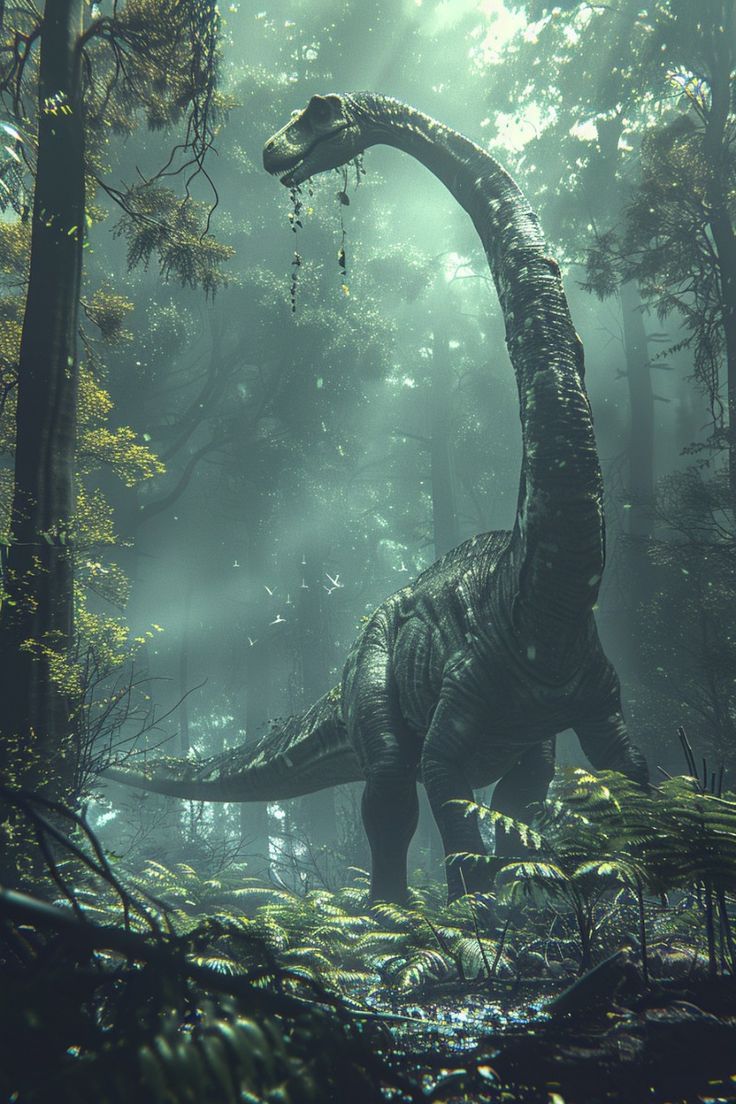Introduction: An Overview of Colossal Marvels
Throughout the course of Earth’s existence, nature has given rise to some incredibly astonishing creatures. From the gigantic beasts that once walked the land in prehistoric times to the enormous giants still inhabiting our oceans today, the sheer scale of these animals is nearly beyond comprehension. Even more intriguing is that the largest animal to ever exist is not an extinct dinosaur—it continues to thrive in our seas.
Picture an organism so enormous that its heart resembles the size of a compact car, and its tongue weighs as much as a full-grown elephant. This describes the blue whale, which claims the title of the largest creature in history. Nevertheless, ancient Earth also hosted remarkable giants, both on land and in the sea, that, although not rivaling the blue whale’s enormity, were still impressively large in their own right.
In this article, we will embark on a time-traveling journey, examining the largest animals to have ever existed—both those that are extinct and those that are still alive. From the awe-inspiring blue whale to the towering Argentinosaurus and the fearsome Megalodon, we will uncover what made these giants stand out and explore why marine creatures often outsize their terrestrial relatives.

The Supreme Champion: The Blue Whale
The blue whale (Balaenoptera musculus) is recognized as the largest creature ever to inhabit the Earth, even larger than the biggest dinosaurs. These magnificent marine creatures can reach lengths of up to 100 feet (30 meters) and can weigh as much as 200 tons. To give you an idea, a single blue whale’s weight is equivalent to that of 33 adult elephants or around 2,500 average-sized human beings.
The Reasons for the Blue Whale’s Massive Size
One significant factor that enables the blue whale to attain such great size is its ocean habitat. Water offers buoyancy, which lessens the gravitational pull on the whale’s enormous body. If such a creature existed on land, it would be unable to support itself due to its weight. However, the buoyancy provided by water allows the whale’s bones and muscles to sustain its substantial mass.
Fascinating Facts About the Blue Whale
- Size of Heart: The heart of a blue whale is roughly the size of a small car and has a weight of about 400 pounds (181 kg). Its powerful heartbeat can be detected from several miles away.
- Weight of Tongue: The whale’s tongue can weigh as much as an adult elephant, making it heavier than many terrestrial animals.
- Daily Food Intake: Blue whales feed by filtering, consuming up to 4 tons of krill (small shrimp-like crustaceans) every day.
- Vocal Abilities: Blue whales are famous for their deep, low-frequency calls, which can be heard over distances of hundreds of miles across the ocean.
The blue whale, known as the largest animal in existence, can grow to lengths of nearly 100 feet and weigh approximately 200 tons. Its enormous heart is similar in size to a compact car, and its vocalizations can be heard from distances of hundreds of miles. Explore more intriguing facts about this magnificent giant on National Geographic – Blue Whale.

The Ancient Giants: Dinosaurs and Prehistoric Beasts
While the blue whale holds the title for the largest animal overall, numerous prehistoric creatures, both land-dwelling and aquatic, achieved remarkable sizes. The Argentinosaurus is recognized as the largest known terrestrial animal, whereas the Megalodon dominated as the most enormous predator in the Earth’s oceans.
Argentinosaurus – The Largest Land Animal
The Argentinosaurus was an enormous sauropod dinosaur that thrived during the Late Cretaceous period, approximately 94-97 million years ago. It is regarded as the largest terrestrial animal to have ever lived.
- Length: Estimates indicate it reached about 100-120 feet (30-36.5 meters) from head to tail.
- Weight: It weighed around 100 tons, which is equivalent to 15 African elephants.
- Diet and Lifestyle: This gigantic herbivore wandered the forests of ancient South America, consuming large amounts of vegetation to support its enormous size.
Spinosaurus – The Largest Predator
Despite the Argentinosaurus being the largest land creature in general, the Spinosaurus aegyptiacus is believed to be the largest predatory dinosaur, even larger than the well-known T. rex.
- Length: It measured up to 50-60 feet (15-18 meters).
- Weight: It weighed roughly 20 tons, nearly double that of a T. rex.
- Unique Features: The Spinosaurus had extended neural spines along its back that formed a sail-like structure. It was also semi-aquatic, preying on fish in ancient rivers and swamps.
Megalodon – The Largest Shark Ever
The Megalodon (Otodus megalodon) was the largest shark ever to swim in the Earth’s oceans, existing roughly 23 to 3.6 million years ago.
- Length: It grew up to 60 feet (18 meters), making it more than three times the size of the largest modern great white shark.
- Weight: Its weight was estimated to range from 50 to 75 tons.
- Diet: As a top predator, it hunted whales, dolphins, and sizable fish. Its bite force was one of the most powerful in history, able to crush bones effortlessly.
Land vs. Sea: Reasons for Larger Marine Creatures
An intriguing aspect of the animal kingdom is that the largest animals predominantly inhabit the ocean. This phenomenon can be attributed to various factors that enable aquatic animals to grow bigger than those living on land.
The Buoyant Advantage
The primary reason marine creatures can achieve such great sizes is the buoyancy provided by water. On land, gravity exerts significant pressure on the skeletal and muscular structures of large animals. Conversely, in water, the buoyant force alleviates this pressure, allowing marine species to grow to tremendous sizes without the risk of collapsing under their own weight.
Oxygen Levels and Metabolic Function
During the Mesozoic era, when many of the largest dinosaurs existed, the atmosphere contained a higher concentration of oxygen. This environment permitted land animals to reach larger sizes and maintain their enormous bodies. Yet, contemporary atmospheric conditions do not support terrestrial animals of that magnitude.
In aquatic environments, oxygen levels remain relatively stable, and large species such as whales have developed effective respiratory systems to thrive despite their substantial sizes.
Temperature Regulation and Food Resources
The oceans provide an extensive and reliable food source, especially for filter-feeding animals like blue whales. The availability of abundant krill allows these creatures to support their large bodies. Furthermore, the stable temperatures found in water help large marine animals retain heat more effectively, which is crucial for their survival in colder conditions.
Extinct Titans: Could There Have Been Bigger?
While the blue whale holds the official record for the largest animal ever, some scientists speculate that even larger prehistoric creatures may have existed. However, the fossil record is incomplete, leaving much of ancient Earth’s biodiversity a mystery.
Undiscovered Prehistoric Giants
- Paleontologists speculate that larger marine reptiles or undiscovered dinosaurs may have existed.
- Fossil evidence is often fragmented, making it difficult to accurately estimate the true size of certain species.
- Some researchers suggest that larger sauropods or unknown sea creatures could still be awaiting discovery.
Cryptids and Sea Monster Myths
Throughout history, sailors have reported sightings of massive, unidentified sea creatures. While most of these tales are likely exaggerated or fictional, they fuel speculation about the possibility of undiscovered titans in the deep ocean.
Interesting Comparisons and Facts
To help illustrate the immense size of these animals, here are some intriguing comparisons:
- Blue Whale vs. Titanic: A fully grown blue whale is approximately the same length as the bow section of the Titanic, making it comparable in size to a large vessel.
- Largest Animal vs. Largest Terrestrial Animal: A blue whale’s weight is nearly 20 times greater than that of an African elephant, which is known as the largest land animal alive today.
- How Many Humans Equal a Blue Whale’s Weight: The average adult human weighs about 80 kg (176 lbs). It would require roughly 2,500 humans to equal the weight of a blue whale.
Conclusion: Giants of the Past, Present, and Future
From the ocean’s depths to the expansive prehistoric landscapes, nature has brought forth some truly a stonishing giants. The blue whale, which still swims in our oceans today, is recognized as the largest animal in history. Nevertheless, the fossil record indicates a time when equally awe-inspiring creatures inhabited both land and sea.
Exploring these titans not only enhances our understanding of evolution but also serves as a reminder of the limitless potential that may still be hidden in the uncharted areas of our planet. Who knows? There might still be unknown giants lurking in the deep, eager to establish their status as the largest animal to have ever existed.







